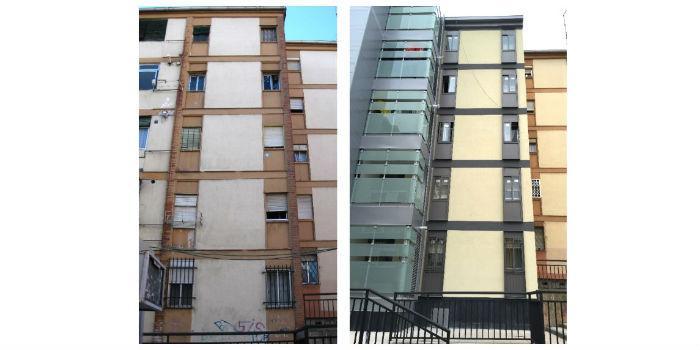 International. Researchers from the Higher Technical School of Building of the Polytechnic University of Madrid (UPM) have analyzed the thermal performance of the façade of a house by controlling surface temperatures before and after the renovation of the building with exterior thermal insulation systems (SATE).
International. Researchers from the Higher Technical School of Building of the Polytechnic University of Madrid (UPM) have analyzed the thermal performance of the façade of a house by controlling surface temperatures before and after the renovation of the building with exterior thermal insulation systems (SATE).
The results obtained indicate that with this type of system the loss of energy of the house is reduced by 57% compared to its original state.
In Spain, more than half of the energy consumed in homes corresponds to the use for heating. This high energy consumption, together with the volume of homes built before the entry into force of the first thermal regulations in Spain, makes it necessary to renovate and maximize the energy efficiency of buildings to achieve the objectives in terms of energy savings set by the European Commission. Currently, one of the most used methods in rehabilitation is to place thermal insulation on the outside: the SATE system.
This measure increases the thermal resistance of the envelope, in which the façade plays a leading role, and combines the aesthetic and functional improvement of the buildings. This method, in addition to solving technical problems such as thermal bridges or condensations in homes, does not reduce the space inside and is little or nothing invasive in its placement. Several simulation studies estimate that the energy savings of a house isolated by the outside, in climates such as Madrid, represents up to 18% improvement.
With the aim of knowing the influence of the SATE system on rehabilitation – and the improvements it produces in thermal behavior – a team of researchers from the UPM Building ETS has carried out a study in a house in a building located in the south of Madrid. The method used consisted mainly of the acquisition of data on ambient and surface temperatures on the facades of the north and south housing, both inside and outside. This process was carried out at the same time of year in the two housing states: before and after being rehabilitated with SATE. A comparison was made between the two cases, in each of the orientations, and the heat flow per square meter of the façade was calculated.
The results achieved show to what extent the thermal performance of the façade is improved with respect to its original state in this type of building in the climatic conditions found in Madrid. The data obtained indicate that with the SATE system the loss of energy of the house is reduced by 57% compared to its original state. It even demonstrates its influence on the unification of temperatures within the same house, reducing the difference between northern and southern temperatures by 66%.
As Sheila Varela, one of the UPM researchers who carried out the study, points out, "the research shows that rehabilitation with thermal insulation systems from the outside helps reduce heat losses from homes with characteristics similar to the one studied."
The SATE system helps to make indoor surface temperatures more independent of outdoor temperatures. Its placement as a rehabilitation method positively influences the maintenance of interior temperatures helping to optimize energy consumption to maintain the comfort temperature in homes. "The use of the SATE system increases the insulation capacity of the facades and, therefore, helps to maximize their energy efficiency," concludes the researcher.
Source: Polytechnic University of Madrid.














